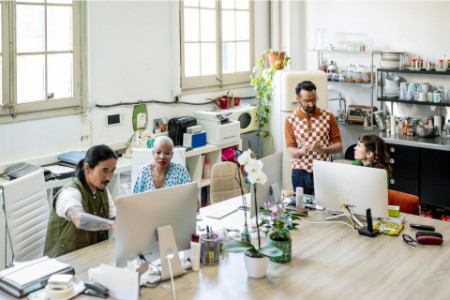From inclusive recruitment tools to accessible websites, learn how to better harness – and retain – the talents of people with disabilities.
Today, more than one billion people around the world are living with a disability. Eighty percent of people with a disability acquire it between the ages of 18 and 64 — their prime working years.
But in most corporate boardrooms, disability inclusion hasn’t risen to the top of the C-suite agenda. In a recent report in collaboration with the organization Valuable (pdf), which surveyed 130 C-suite executives in 17 countries, 56% of respondents indicated that the topic of disability rarely or never comes up on their leadership agenda.
At EY, we have a long history of creating an inclusive culture that welcomes everyone, including those working with disabilities. It all began with EY co-founder, Arthur Young. Arthur was trained as a lawyer, but after losing much of his eyesight and becoming deaf, he could no longer practice courtroom law.
Early in the 20th century, he turned to finance and the new field of accounting. His "disability" drove him to innovation and entrepreneurship, both of which played pivotal roles in the development of the EY organization.
As with gender, LGBT+ and other diversity dimensions, improving disability inclusion isn’t only the right thing to do — it has business-building value as well. “We know that our organization is only as robust and sustainable as our ability to include and harness the unique talents of all of our people,” says Karyn Twaronite, EY Global Vice Chair – Diversity & Inclusiveness. “Research shows that diverse perspectives drive better business outcomes, and that when people feel a sense of belonging at work, they are healthier and more engaged.”
At EY, we understand the value that people with disabilities bring to our teams, which is why in 2019, EY joined The Valuable 500, a global group of the world’s most influential businesses that are igniting systemic change by unlocking the business, social and economic value of people living with disabilities globally.


